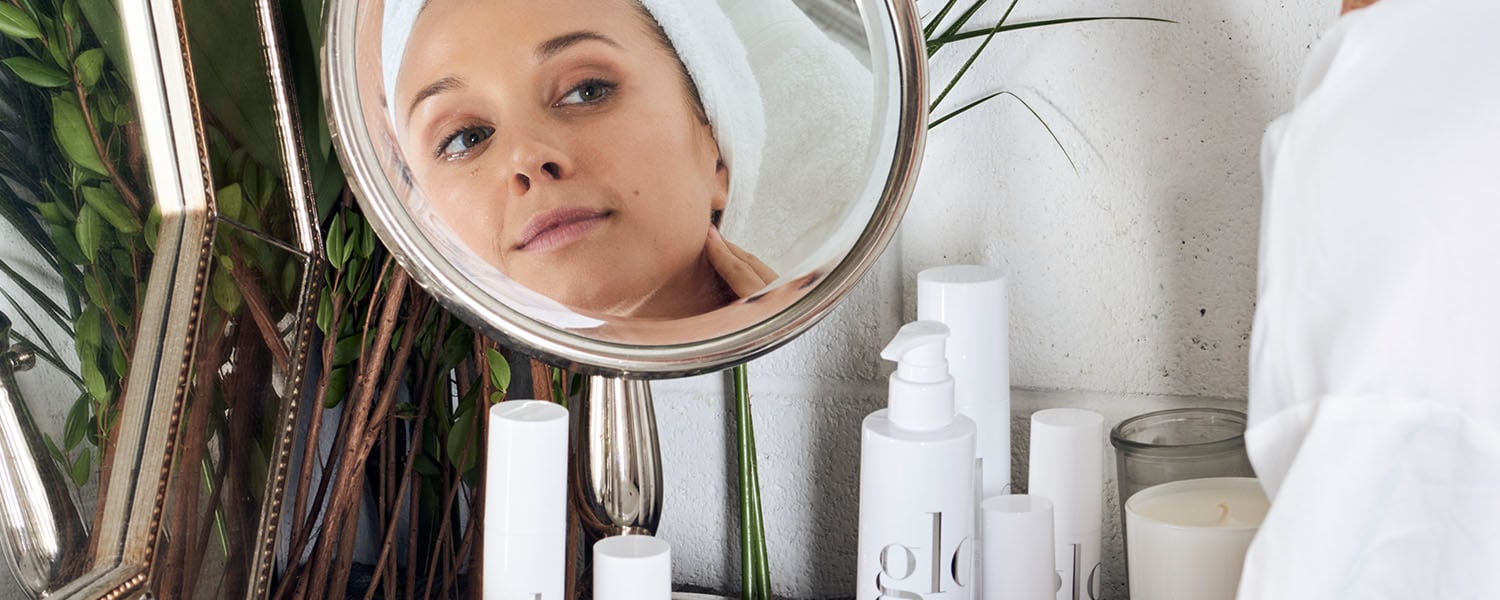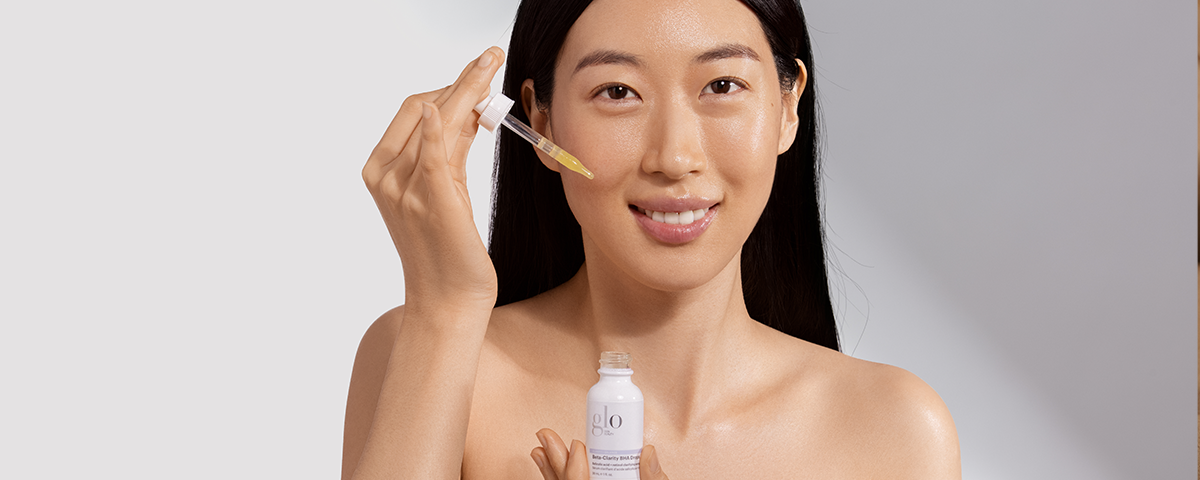
Everything You Need To Know About Retinol
Hailed as one of skincare’s all-time superheroes with most dermatologists wielding it as their top skincare tool (- along with SPF, of course), retinol is one of the most effective ingredients in the modern skincare kit. It helps accelerate skin cell turnover, reduce inflammation, diminish hyperpigmentation, and stimulate collagen production, promoting smoother, firmer, brighter skin. In short, it’s one of the best ingredients to use in all anti-aging skincare rituals.
And, with all this level of skincare power comes a lot of responsibility. For some of us, retinol can be a harder ingredient to work into our rituals due to its reactivity on our skin. The trick is finding a retinol product and application schedule that truly suits your skin. So whether you’re a retinol devotee looking for a better understanding of this powerhouse ingredient, wanting to start adding retinol regularly to your skincare ritual, or you’ve had a reaction and you’re unsure how to return to retinol, wherever you are in your skincare journey, get a little help from our experts and discover all the ways retinol could be the game-changing boost your skin needs.
“There’s a retinol product for everyone,” says Dr. Nina Desai, board-certified dermatologist. “Anyone who’s looking to start their anti-aging skincare routine needs to incorporate some form of retinol product into their mix. The trick is knowing your skin and what it will tolerate. Understanding what to use and how often is key when working retinol into your routine.”

What Is Retinol?
First up, what actually is retinol? Along with other retinoids, retinol is essentially a derivative of vitamin A - one of the body’s key nutrients for boosting cell turnover. “Retinol is well-studied as a key skincare ingredient for minimizing fine lines and wrinkles, and to slow the aging process. It works deep within to promote cell turnover, getting rid of dead cells, helping to promote collagen synthesis, so our skin looks tighter, smoother, firmer, and brighter, and the appearance of fine lines and wrinkles is reduced,” explains Dr. Nina. “And, when you use it consistently, skin looks fresher, less dull, with improved tone and texture.”
Functioning much like a high-powered antioxidant to support skin against free radical damage, retinol promotes healing and accelerates cellular repair and renewal at a deeper level than some of its hero counterparts like vitamin C and salicylic acid. This makes it such a great complementary ingredient to work synergistically with them. A true multitasker, retinol boosts collagen, reduces the appearance of fine lines and wrinkles, smooths skin’s texture, and reduces pigmentation issues for a more even skin tone. Oh, and if that wasn’t all enough, it also helps combat acne too.
“I use retinol for blemishes and acne as it gets into pores to clean out black and white heads and clear anything that might be brewing - so we aren’t only treating active acne but also getting rid of anything that’s coming up from below. For this, the Beta-Clarity BHA Drops (formerly known as Renew Serum) are very effective as they combine both salicylic acid with retinol for an antibacterial, clarifying approach,” Dr. Nina adds. It's perfect for getting your skin used to retinol—retinization.
How To Use Retinol
You can start using retinol at any age - especially if you’re starting to see early signs of aging such as fine lines, sun spots, pigmentation issues, or even just general dullness. And, ideally, you don’t even need to wait until those signs start to appear, using retinol proactively can actually help prevent and slow them from occurring. The most important thing - especially if your skin is more reactive, is to go slow and build your tolerance.
As with starting any new active skincare product, it’s all about knowing your skin. “Ways to start using it could be adding a retinol to your nighttime routine twice a week, rather than every night. If you start by applying every night it could be too much too soon. And, you can build from there. If you’re getting reactions, have patience, don’t abandon it, there are ways to build up your skin’s resilience and acclimatize to retinol,” shares Dr. Nina.
“A great way to deliver retinol in an easily controllable way is via a serum like GlyPro Retinol Drops to harness that concentrated form, and get dose precision. You can start with a few drops and see how your skin does, then work your way to 4-6 drops full-strength. One way to buffer it if your skin is reactive is to add a few drops to your moisturizer,” she adds.
And, if you have super sensitive skin but still want to try retinol, short contact therapy is another way to go. “The more of the active ingredient you get on your skin, the more benefit you’ll get, but if your skin really doesn’t tolerate retinol you can try short contact therapy where you apply the product and you then wash it off after about 15 minutes. This will still give you some benefits and help your tolerance over time,” she explains.

Retinol Strengths
Not all retinol products are created equal. “Retinol can be formulated in many ways into different products in different concentrations,” explains Anna De La Cruz, Glo’s master aesthetician. “While it’s important not to get too hung up on percentages as your guide to choosing a retinol product, it’s helpful to understand that a higher percentage of retinol doesn’t always mean a stronger formulation. It’s actually all about how it’s formulated, such as the product’s pH level, other ingredients in the mix, and also if it’s anhydrous - meaning it’s a waterless formula. Anhydrous formulas actually boost the efficacy of those key ingredients - so even if it’s a lower percentage of retinol, its strength will be higher.”
In order of strength, our Glo retinol serums are as follows;
Retinol+ Resurfacing Serum 0.5% - it’s anhydrous so it’s actually our strongest retinol serum. It resurfaces and refines for a deeply smoothed, softened, and brightened effect.
Best-selling GlyPro Retinol Drops (formerly known as Retinol Smoothing Serum) at 1.5% - This targeted serum focuses less on breakouts and more on smoothing, fine lines, and brightening your complexion.

Beta-Clarity BHA Drops - combines less than 1% retinol with other acne-fighting ingredients, salicylic acid and glycolic acid, for a clarified, balanced effect.
“If you’re looking for a retinol serum to start with, for really consistent use, Beta-Clarity BHA Drops are the ones to try, especially if you’re prone to breakouts too” shares Anna. “If you know your skin has good toleration of stronger actives, try leveling-up to GlyPro Retinol Drops, or the Retinol+ Resurfacing Serum for the more retinol-bold.”
There are also Glo’s retinol-infused signature peel treatments too. “We’ve created two at-home peel treatments that use retinol to deliver next-level smoothing and resurfacing results,” shares Anna. “Each kit includes everything you need to complete the full peel - with a little leftover for post peel care too.”
Retinol + C Smoothing Peel is a great level 1 peel for peel newbies or for regular bi-monthly maintenance. For the next level, try the GlyPro AHA Resurfacing Peel for more robust resurfacing and refined radiance.

When To Apply Retinol
As retinol can make the skin more sensitive to UV rays - which also decrease the effectiveness of retinol, you should only apply it at night, and make sure to apply SPF during the day - all day, every day.
Balance is everything. Start with a few drops of your retinol product and build from there. “Depending on your skin’s tolerance you can use 2-7 times per week,” adds Anna.
As it has a tendency to be a little more irritating, avoid using it the night before exfoliating to avoid any potential reactiveness or sensitivities. Also if you’re getting any in-office treatments, avoid using retinol around those times to let the skin settle.
Mild irritation, dryness, and sun sensitivity is normal as the skin adjusts. If you’re experiencing any significant redness, intense peeling, or burning, stop using retinol and let your skin calm down. If you have rosacea or eczema you should err on the side of caution with retinol and speak to a dermatologist. Options if you want to persevere with retinol, would be short contact therapy, or using the sandwiching technique applying moisturizer first as a buffer, then adding a few drops of retinol serum, and another layer of moisturizer for cushioning.
There are some gentler retinol alternatives such as bakuchiol which is a 100% plant-based ingredient that has similar benefits to retinol but without the irritation. Try adding the bakuchiol-infused Eye Restore eye cream into your daily ritual. There are also bio-retinols which are also plant-derived and deliver similar anti-aging properties with a more gentle, nourishing approach. For this, we love Phyto-Active Light Moisture with its age-defying, moisture-boosting power.
What Ingredients Go Well With Retinol?
Lactic acid works well with retinol in lower doses as it exfoliates, helping the retinol penetrate deeper. For this, a great treatment pairing could be GlyPro Retinol Drops, followed by Hydra-Bright AHA Hydrator for that lactic acid and brightening boost. Other great ingredients to work in with your retinol include the essential HA-Revive Hyaluronic Drops - for that hit of hyaluronic acid-fueled hydration, and alternating with another anti-aging favorite Bio-Renew EGF Drops which you could use during the day for a firming, reparative boost.
“The absolute foundations of every anti-aging skincare ritual will be a vitamin C serum like C-Shield Anti-Pollution Drops, a strong SPF such as the Moisturizing Tint SPF 30+, and of course your retinol for night. After these essentials, you can start adding in things like weekly or biweekly exfoliation with AHAs or brightening agents with alpha arbutin,” shares Dr. Nina.
If you’re looking for specific skincare advice, please feel free to speak to one of our expert advisors or consult your dermatologist.
More Glo:
Bakuchiol: Nature’s Alternative Retinol












